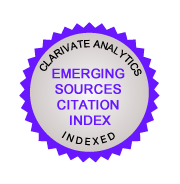COUNTERFACTUAL DEPENDENCE, BOUNDARY AND RESOURCE DEPENDENCE
DOI:
https://doi.org/10.32890/jis2025.21.1.2Abstract
This study employs counterfactual dependence to explore boundary interactions in resource dependency research. Using set-theoretic operations—union, intersection, and complement—we examine how boundaries evolve when interdependence precedes and shapes non-equity relationships. We propose that when interdependence changes non-equity relations, counterfactual dependence adjusts boundary interactions at union (dichotomy) and intersection (clopen) operations. Additionally, counterfactual dependence facilitates consensus through transitive causation while maintaining dissensus, influencing boundary interactions at union. In cases of persistent dissensus caused by intransitive causation, counterfactual dependence elucidates the complement at union. This research highlights the importance of causal (counterfactual) resource dependence and set theory in advancing the understanding of boundary interactions in international business research.























